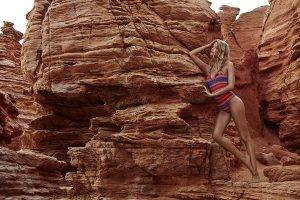Project Brief 2– Reflection
Project Brief 2 was an eye-opener for all of us in the group. When we first introduced ourselves at the formation of groups, we had no idea of what we as individuals are aiming for. Each of us had very different tastes, styles and subjects during the initial brainstorming presentation on the whole studio. Though, as we have known more of each other’s visions, we came to a more narrowed down idea and were getting a sense of what we can do to incorporate each other’s focuses.
What had greatly inspired our experimental short (30 sec) piece are the Egyptian themes and subjects we practiced with when we attended the camera workshop. During this collaborative workshop, we brought Egyptian props that Jenny had to experiment in relation to the cameras we can use. We used both RMIT’s camera and Steph’s DSLR to get some footages of the fabrics and bracelets which then are used as we did an individual edits to see each of our different techniques. Jenny’s vision of the themes and mood board allows her to take upon the director’s role while Steph and Annie each experiment on different camera techniques. I have posed as the actor for creating body as well as fabric movements we could capture in different speed. We agreed that all of us would incorporate slow motion and close up focus on the fabric pattern, accessories and movements.
With all our individual edits, we came together to see the different versions of tastes and I was surprised of how other’s works are techniques that I have never tried before. I was very fond of Jenny’s experimental style of playback and white flashes that compliment the Egyptian music she used. I was also inspired by Steph’s use of slow motion to focus on the fabric movements and glad that they liked my use of overlays and light techniques. Therefore we contributed these different editing styles towards our Egyptian themed piece.
Our further shooting day on the beach was a great lesson for the cameramen as we tried to capture consistent footages according to the sun lighting. Due to this change of weather, Annie had to colour-grade the footages in post-production. Both Jenny and Steph worked well together to use their cameras to capture different angles at the same time and action. Though, we learned that because we were also using hand-held motion, it is a great idea to use stabiliser or a monopod to avoid too much shaky movements. Our other actor and myself tried to create the dancing movements and waited for the right moment for the wind to come. We figured out that the more turns we did as we danced, there is a greater chance that the camera can capture the focal points without the camera following the subject constantly.
We came together as a group as much as we can to edit the final Egyptian piece so that everyone can contribute their ideas during the process. We also did some individual edits when it is difficult to meet and use any part of our edits into the final piece. Overall, from the few challenges we’ve faced in availabilities to meet, shooting day and though we omit some parts of our own edits, I feel successful that we are able to combine all of our ideas into one final piece.
My progress versions:
#1
#2










